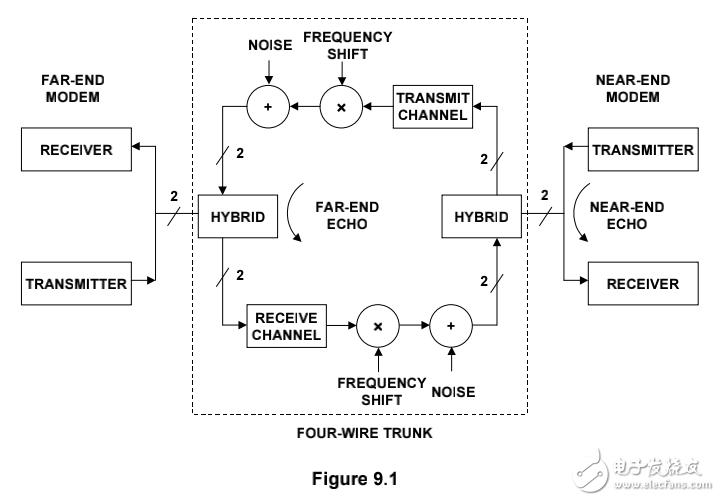
资料下载

DSP应用与实例
Modems (Modulator/Demodulator) are widely used to transmit and receive digital
data using analog modulation over the Plain Old Telephone Service (POTS) network
as well as private lines. Although the data to be transmitted is digital, the telephone
channel is designed to carry voice signals having a bandwidth of approximately 300
to 3300Hz. The telephone transmission channel suffers from delay distortion, noise,
crosstalk, impedance mismatches, near-end and far-end echoes, and other
imperfections. While certain levels of these signal degradations are perfectly
acceptable for voice communication, they can cause high error rates in digital data
transmission. The fundamental purpose of the transmitter portion of the modem is
to prepare the digital data for transmission over the analog voice line. The purpose
of the receiver portion of the modem is to receive the signal which contains the
analog representation of the data , and reconstruct the original digital data at an
acceptable error rate. High performance modems make use of digital techniques to
perform such functions as modulation, demodulation, error detection and correction,
equalization, and echo cancellation.
A block diagram of an ordinary telephone channel (often referred to as plain old
telephone service – or POTS) is shown in Figure 9.1. Most voiceband telephone
connections involve several connections through the telephone network. The 2-wire
twisted pair subscriber line available at most sites is generally converted to a 4-wire
signal at the telephone central office: two wires for transmit, and two wires for
receive. The signal is converted back to a 2-wire signal at the far-end subscriber
line. The 2- to 4-wire interface is implemented with a circuit called a hybrid. The
hybrid intentionally inserts impedance mismatches to prevent oscillations on the 4-
wire trunk line. The mismatch forces a portion of the transmitted signal to be
reflected or echoed back to the transmitter. This echo can corrupt data the
transmitter receives from the far-end modem.
Half-duplex modems are capable of passing signals in either direction on a 2-wire
line, but not simultaneously. Full-duplex modems operate on a 2-wire line and can
transmit and receive data simultaneously. Full-duplex operation requires the ability
to separate a receive signal from the reflection (echo) of the transmitted signal. This
is accomplished by assigning the signals in the two directions different frequency
bands separated by filtering, or by echo cancelling in which a locally synthesized
replica of the reflected transmitted signal is subtracted from the composite receive
signa

声明:本文内容及配图由入驻作者撰写或者入驻合作网站授权转载。文章观点仅代表作者本人,不代表电子发烧友网立场。文章及其配图仅供工程师学习之用,如有内容侵权或者其他违规问题,请联系本站处理。 举报投诉
- 相关下载
- 相关文章







